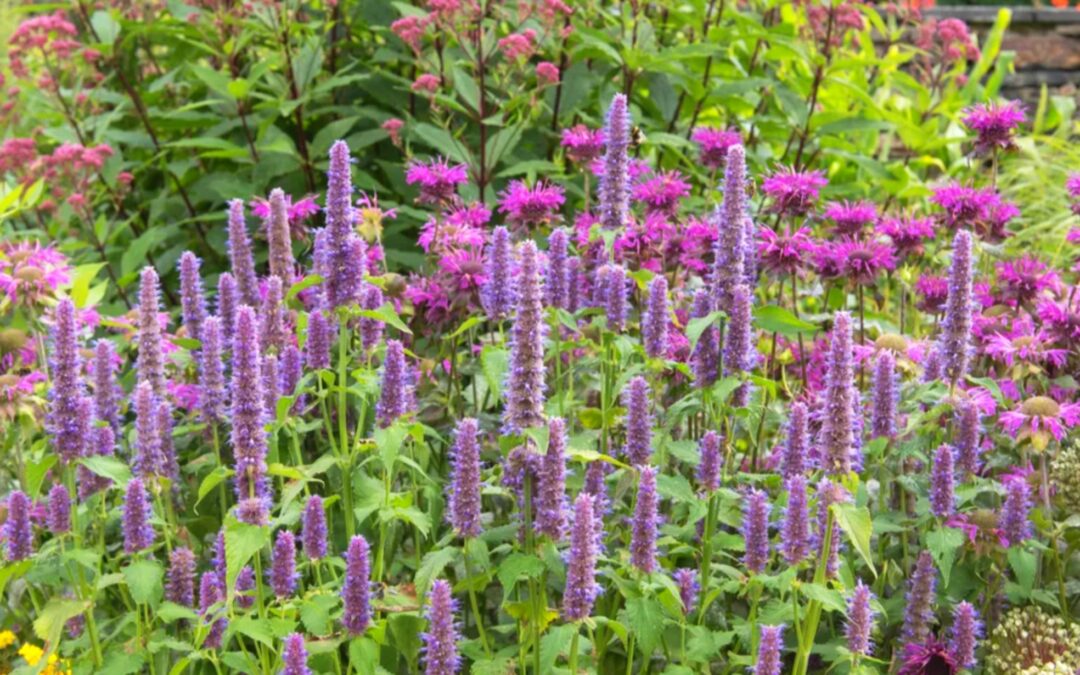Why is pruning good for perennials?
1. First, pruning helps keep your plants healthy, because you’re removing dead or diseased materials. 2. Pruning also maintains good air circulation, which in turn helps lower the risk of fungus & rot.
3. Done at the right time, pruning will jumpstart the growth spurts of old plants & increase the number of blooms throughout the growing season.
4. Last – and for some, the most important – pruning contributes to landscape cohesion & helps your plants look more intentional & manicured.
Should you prune perennials in Spring?
Should we prune at the end of Fall gardening season, or at Spring gardening season?
The answer is, it depends. For some plants, the answer is clearcut (no pun intended), determined by whether the plant has been affected by any disease. But for most perennial plants, pruning is best done in Spring. There are many more benefits to having your perennials pruned in Spring.
Here are 4 of the reasons:
1. Perennials are a food source for birds during winter.
Gardens are their own ecosystems where even in the dead of Winter, many birds rely on the seed heads of perennials for food. So tidying up our gardens may seem like the right thing to do, but this simple habit deprives wildlife of a source of nourishment.
2. Perennials provide shelter for pollinators in Winter.
Dry plant husks & seed heads provide excellent overwintering shelter for pollinators.
About a third of the native bees of North America overwinter in plant cavities, including hollow stems, leaf debris & plant husks. Waiting til Spring to clean up perennials leaves them a safe environment to spend the Winter in.
3. Some perennials need the protection of their own foliage in Winter.
Some perennials are more likely to emerge out of Winter unscathed if they have an extra layer of insulation. For example, plants like Red-hot Poker, Chrysanthemums, & Anise Hyssop need the shelter provided by their leaves & tops to make it through Winter. In that sense they’re self-mulching, saving us time & effort come Spring.
4. How to prune perennials.
Ideally you should have your plants pruned while they’re still dormant in Spring.
Clarks provides years of professional expertise to pruning your perennials right.
Contact us today to help with your pruning needs.
Here is a list of some common perennials to be pruned in Spring:
1. Chrysanthemums
2. Echinacea
3. Asters
4. Russian Sage
5. Lavender
6. Globe Thistle
7. Red-hot Poker
8. Fuchsias
9. Black-eyed Susan
10. Shasta Daisies
11. Lamb’s Ears
12. Coral Bells
13. Delphinium
14. Pincushion Flower


Hi! I’m interested in getting a quote for landscaping services. I’d like to know your prices for the following:
• Lawn mowing and maintenance (weekly, bi-weekly, or monthly).
• Trimming of bushes and trees.
• Garden design or redesign.
• Plant or flower installation.
• Seasonal maintenance (like leaf removal in the fall or spring preparation).
• Irrigation system maintenance (if applicable).
• Any other additional services you offer.
I’d appreciate a detailed quote, and if you have any packages or discounts for recurring services, I’d love to hear about them.
Thank you